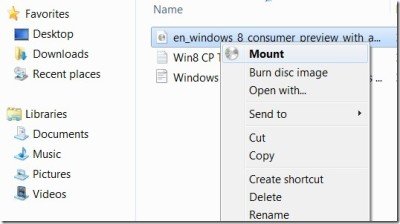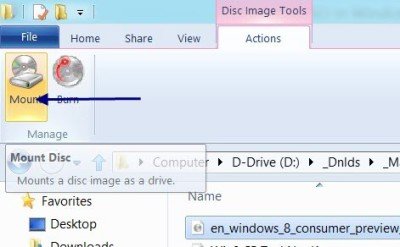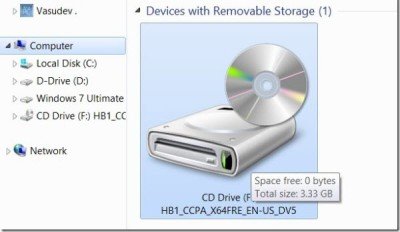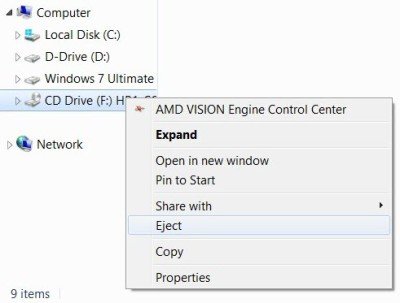Many times you must have used third-party software to quickly Mount a disc image. This image appears as a virtual DVD drive. Mounting ISO images is a great way to view and run the content of the disk image without having to burn it onto a CD/DVD if you have such software. Now with Windows 10, this feature has been provided natively. So let us see how to Mount and Unmount an ISO so that you can extract files from the ISO or run them on a virtual drive.
Mount or Unmount ISO file in Windows 11/10
When you select your ISO file, the ribbon interface has the Mount option along with Burn. Use it.
Or else, just right-click the ISO to get the Mount option.
Alternatively, simply double-click the ISO to Mount.
After mounting you will be able to see the Virtual Drive listed.
Now you will be able to run and install the software from the Virtual Drive.
To UnMount, just right-click on the drive and select Eject
This is one of the great new features in Windows, among many!
On a side note about ISO files, many a time, people just start using the ISO file without checking them and later get an error during installation. Always remember to verify the integrity of the ISO downloaded from the web. You must have seen the digital signatures provided in the form of MD5 or Sha 1 hash. Just use some free apps like slavasoft.com/HashCalc to verify these digital signatures. If they match, then you are sure that you have downloaded the exact copy of the file without any error. And you can proceed to use ISO file.
Go here if you are unable to mount ISO images in Windows.
How to mount ISO using PowerShell?
You can mount ISO images using PowerShell as follows:
Open PowerShell as an administrator and execute the following command:
Mount-DiskImage -ImagePath "Path to the ISO"
You have to replace Path to the ISO with the actual path of the .iso file.
How to unmount ISO using PowerShell?
You can unmount ISO images using PowerShell as follows:
Open PowerShell as an administrator, and execute the following command:
Dismount-DiskImage -ImagePath "Path to the ISO"
You have to replace Path to the ISO with the actual path of the .iso file.
Windows 7, Windows Vista and Windows XP users may want to use the Virtual CD-ROM Control Panel from Microsoft.




Thanks for this! I’m really excited to see the full release of Windows 8!
I followed the instructions which you gave and thereby mounted and installed a software…but I am facing a problem during unmounting. When I right-click on the new drive created, the Eject button is inactive… Hence, i am not able to remove the drive…Please help..
What was the ISO file? And is the Mount option enabled?Check if the ISO file type got associated with some 3rd party program?Associate it back with explorer & try. Right click on an ISO file, Properties, click on change , choose Explorer from list
Thank you! I mounted a virtual DVD drive only to discover that the program in the iso file wouldn’t run in Windows 8. I thought I’d be stuck forever with the darned virtual disk, and was happy to see it ‘ejected’!